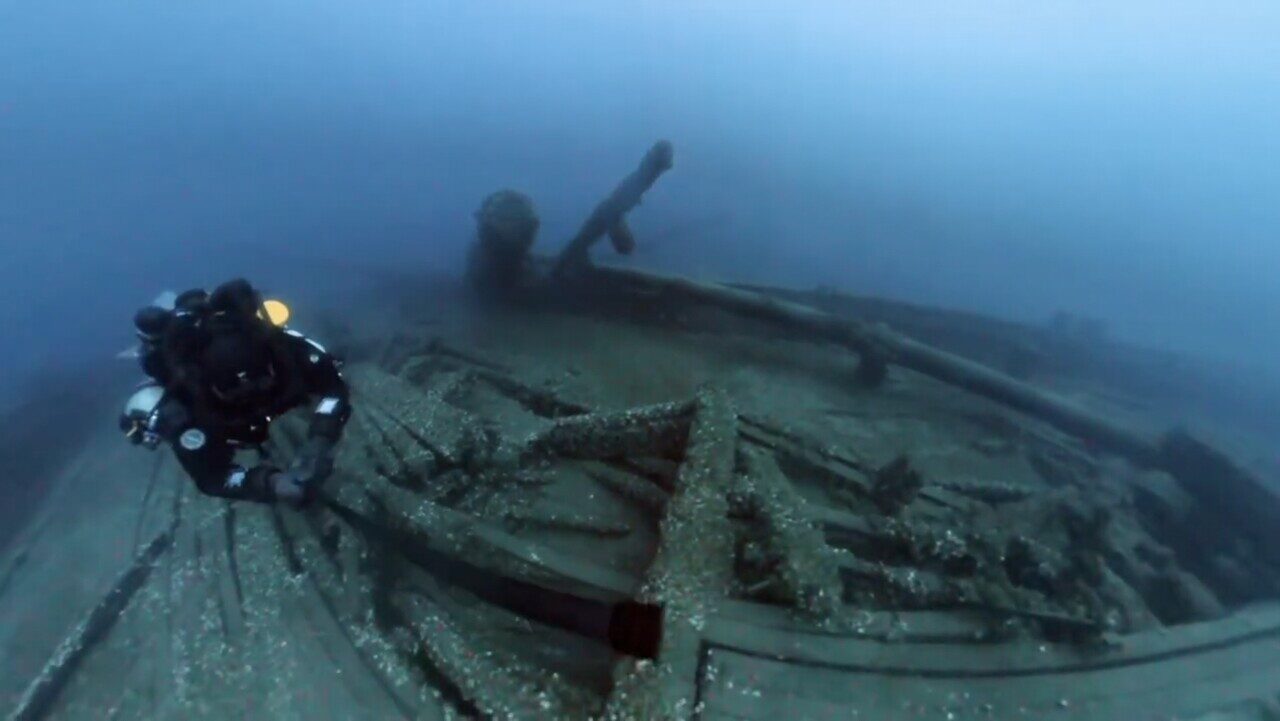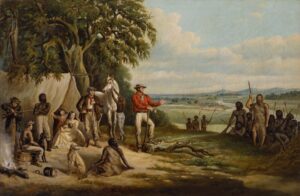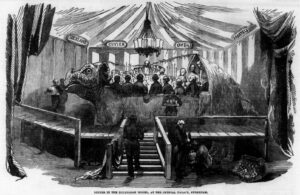In November of 1878, a three-masted schooner named the James Bentley set sail from Buffalo with a hold full of grain destined for Chicago. Built in 1897, it was a 54-meter-long wooden ship bearing a unique dragon figurehead. It had just come off of a round of repairs and updates on dry docks, and her skipper, Captain Hamilton, was a careful, experienced navigator.
But of course, a well-seasoned crew and a captain are no match for the “Witch of November” on the Great Lakes, as Gordon Lightfoot informs us. The James Bentley ran into bad weather. Then, while attempting to sail through a three-kilometer-wide gap between an island and the shore, the ship struck rocks.
The entire crew felt the impact, and instantly, the ship began to fill with water. All hands rushed to begin pumping it out, but they couldn’t keep up with the deluge, especially in heavy seas. For three hours, they attempted to free the ship and struggle back to shelter, hoping to save the vessel and its cargo.
But it was no use. It was sinking underneath them, and Captain Hamilton was forced to abandon ship. Dutifully, he was the last one to leave the James Bentley. It sank in 52 meters of water off 40-Mile Point.
A Michigan grain relic
Luckily, the crew managed to escape onto a lifeboat. Nearby, the bark Erastus Corning saw the wreck and picked up the crew. They all survived without injuries except for the mate, William Dervy, who broke his arm. Helpfully, Captain Clarke of the Erastus Corning, who had no medical training, set his arm for him. To his credit, a physician who examined it later said the Captain did a good job.
The cargo was not so lucky. The waves of Lake Huron swallowed 36,288 bushels of rye. A contemporary newspaper report stated that “the vessel and cargo are certainly beyond all hope of recovery, the water where they are, being very deep. The cargo is, of course, ruined already.”
Recently, scientists at Michigan State University set out to prove otherwise. You see, those 36,288 bushels of rye weren’t just any grain; they were a variety that is now lost. Michigan used to grow a lot of rye — more than any other U.S. state. But by the 1970s, no one was paying for it, and farmers switched to soybeans and corn. The Michigan rye varieties died out.
Now a movement to revive the Michigan rye industry, led by brewers and MSU, is attempting to bring back old cultivars. They had success recently with the “Rosen rye,” a once-lost variety that was germinated from seed bank samples. Now it is being planted all over South Manitou Island, where it once grew.
Mammoth Distilling and MSU now plan to do the same with the so-called Bentley rye, the grain preserved inside the wreck of the James Bentley.

Two boats float above the wreck of the James Bentley and its cargo. Photo: MSU
Rye-vival
The first order of business was retrieving the cargo. So in September 2024, a crew of six set out in two small boats, sailing nine kilometers out onto the lake. They were now over the James Bentley, which had held up well over the 146 years. Divers went down and retrieved some of the rye using a special tube.
Once they surfaced with their prize, the race was on. The near-freezing water had preserved the seeds, but the longer they spent in the warm air, the less likely they were to germinate. They were delivered on ice to MSU Associate Professor Eric Olson, who had successfully germinated the Rosen rye.
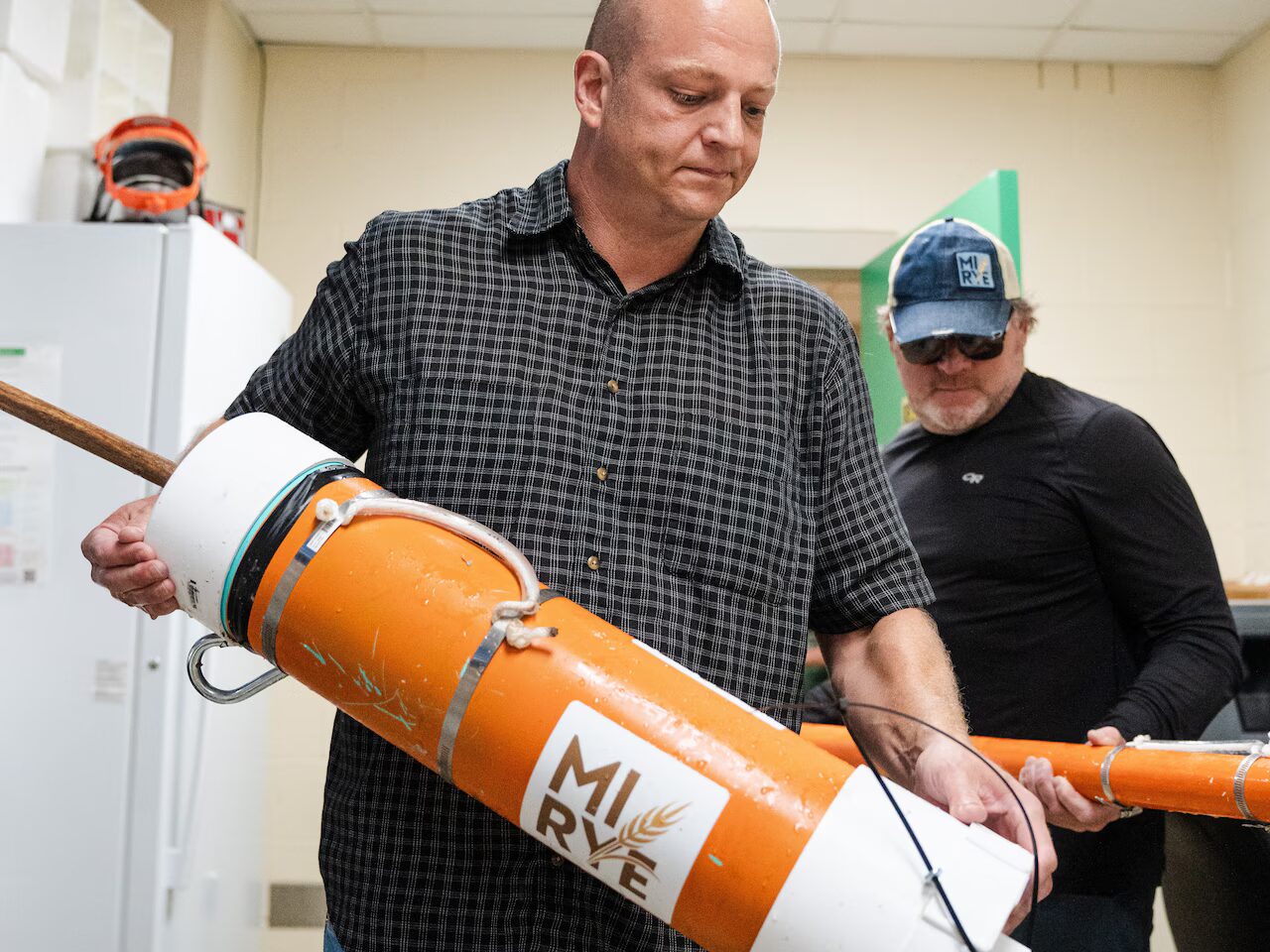
Eric Olsen with a specially designed tube full of 19th-century rye seeds. Photo: Nick Schrader/Michigan State University
But the Bentley rye seeds were much older. Undaunted, Olsen and his team arranged the seeds in germination boxes and fed them plant hormones. They tried different temperatures and moisture levels to see what would make the seeds germinate.
Nothing, it turns out. They just sat there, not sprouting. Olsen believes that this means the mitochondria in the seeds, which would have turned the sugars into energy and made the rye sprout, had died off. The seeds wouldn’t grow on their own.
But they weren’t dead.
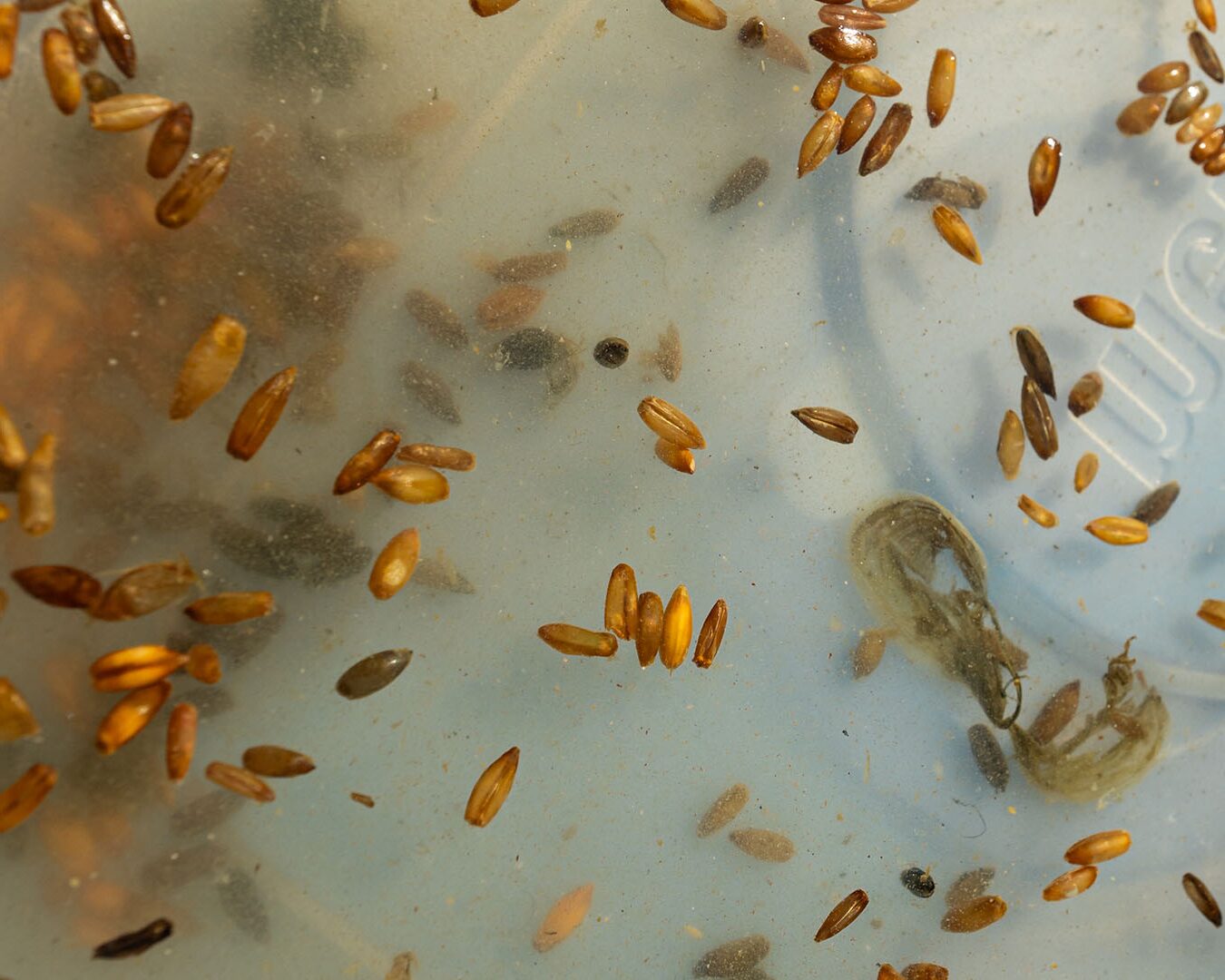
The seeds failed to germinate, but that doesn’t mean the Bentley rye is doomed. Photo: Michigan State University
The future of Bentley rye
Eric Olsen is not giving up on the rye seeds. Their genetic information is still preserved inside them.
His new plan is to extract this DNA and use that to revive the Bentley rye. If he can sequence the DNA, he can take a modern rye variety — or the Rosen rye, which would likely be more closely related to the even older Bentley — and use it as a template to rebuild the Bentley rye. This is the same process scientists have proposed for resurrecting extinct species like the woolly mammoth. But he would be the first to do it with a plant species.
If he is successful, the new-old rye variety can be used to brew whiskey. Rye grown from historical cultivars may give the whiskey a unique flavor. Distillers hope that rebuilding Michigan’s rye industry will encourage agritourism, envisioning a “Michigan Rye Trail,” similar to Kentucky’s famous Bourbon Trail.
“We want people to know where their grain came from — and that’s proudly grown in Michigan,” said Chad Munger, owner of Mammoth Distilling.
